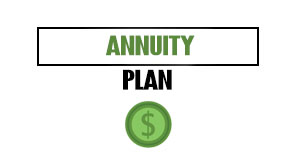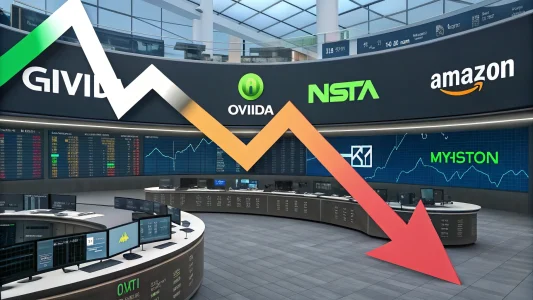One of the most exciting and rewarding ways to achieve financial independence is to start an online business. There are, however, many potential pitfalls that can derail even the most promising venture. My online business has taught me a lot over the past 15 years, and I’ve made many mistakes.
In this blog post, I aim to share the two biggest mistakes I made, but mostly, I want you to know how to avoid them.
Table of Contents
ToggleMistake #1: Ignoring the Power of an Email List

When I launched Good Financial Cents in 2008, I wasn’t aware of how important an email list would be. My main focus was learning SEO and ranking in Google search results, and I am proud to say that I succeeded. After 18 months, my site had over 100,000 unique visitors per month. That amount of traffic was the ultimate validation of my efforts, and I assumed it would last forever.
Then came the first Google algorithm update I had ever experienced. My traffic dropped by 70% overnight. Obviously, the impact was devastating. As I logged into Google Analytics daily, praying for a miracle, my numbers remained dismal. It took nine months for me to regain my traffic. During this time, I realized I had made a fatal mistake; I hadn’t collected email addresses from my visitors.
The importance of email lists.
In today’s volatile world of online commerce, your email list is your lifeline. The algorithm can change, and the platform can go out of style. But you control the email list you have. So, here’s why collecting emails should be a priority if you haven’t already;
- Direct communication. According to Forbes, around 88% of people check their email daily. What makes email so popular? It’s a popular way to communicate. As such, your email list provides you with a direct line to your audience, allowing you to communicate blog updates, new products, or relevant content.
- Stability amid algorithm changes. Your reach often decreases as social media platforms and search engines tweak their algorithms. Maintaining an email list lets you stay in touch with your audience.
- Higher conversion rate. As your subscribers are more engaged and likely to act on your offers, email marketing typically has a higher ROI than other forms of marketing. It’s estimated that email ROI is $36 for every $1 spent.
How to get started.
Don’t wait until tomorrow to start collecting emails. For beginners, you can use tools such as Kit, Mailchimp, or AWeber — many of which offer free plans. To get visitors to sign up, you can provide a free lead magnet, like an eBook or a checklist. Building an email list will be beneficial in the long run, even if your traffic is modest.
Mistake #2: Relying Solely on Affiliate Marketing

For my business, affiliate marketing has been a major revenue generator. As a financial product and service promoter, I have earned millions in commissions. The model is simple, as well. You can earn money when readers take action by including affiliate links in your content. This model does, however, have a downside.
With affiliate marketing, you are dependent on external factors for your income. In addition to reducing commissions, companies can change terms or discontinue programs altogether. Additionally, relying on SEO traffic for affiliate conversions is risky, as I learned from my experience with the Google algorithm.
Why you need your own product.
You have more control over your income when you create your own product, such as an online course, ebook, or membership site. As a result, you can;
- Diversify revenue streams. Selling your own product or service frees you from reliance on affiliate programs and ads.
- Build authority. You position yourself as an expert in your niche by offering a product.
- Foster customer relationships. By selling directly to your audience, you can establish stronger connections and gain a deeper understanding of their needs.
My first digital product.
The first digital product I created was a comprehensive course on social media marketing and online marketing for financial advisors. Within its first year, I earned over $100,000 selling it for between $2,500 and $3,500. It was only after I realized I wasn’t passionate about serving that audience anymore that I switched gears.
When I look back, I wish I had built a flagship product that was more closely aligned with my long-term goals and interests.
Tips for creating your first product.
- Start small. You can start with a simple PDF guide or mini-course. You can create visually appealing materials by using tools like Canva.
- Solve a specific problem. Develop a product that addresses a common pain point in your audience.
- Iterate and improve. Even if your product isn’t perfect, launch it anyway. Over time, gather feedback and refine it.
Building a Sustainable Online Business
Despite constant changes in the online business landscape, some principles remain the same. Rather than making the same mistakes I did, focus on building assets you control, including an email list and your own products. Regardless of algorithm changes or platform changes, these elements provide stability and opportunities for growth.
Also, don’t let perfectionism hold you back when starting out. Rather than waiting to see what happens, you should launch your ideas, learn from the process, and adapt as you go along. Entrepreneurs will always have setbacks, but what matters is how you react to those setbacks.
Take action today by;
- You can start an email list with free tools like Kit or Mailchimp.
- Come up with ideas for a digital product that will serve your audience.
If you follow these strategies, you can build a thriving online business that can withstand any storm.
FAQs
What’s one of the biggest mistakes people make when starting an online business?
Most people jump into a business without doing proper market research. It might be a cool idea, but they haven’t taken the time to understand their target audience, their needs, and the competition. The result can be creating a product or service that no one wants.
How can I avoid underestimating costs?
It can be expensive to start a business. As such, creating a detailed budget is essential. Consider everything from website design and marketing to inventory and rent and unexpected costs like repairs.
Why should I build an email list?
Your email list is one of your most valuable assets. It lets you directly reach out to potential and existing customers with promotions, updates, and exclusive offers.
At the same time, you should also have a well-rounded strategy. Consider social media marketing, search engine optimization (SEO), content marketing, paid advertising, and email marketing.
How do I overcome the fear of failure?
Failure is a fear we all experience. Don’t let it discourage you; embrace it as an opportunity to learn. There will always be setbacks. Keep moving forward after learning from your mistakes.
What if I feel like giving up?
Getting your business up and running can be challenging. Obstacles will come your way. Remember why you started this journey, celebrate small victories, and stay persistent.
Featured Image Credit: Photo by AS Photography; Pexels
















